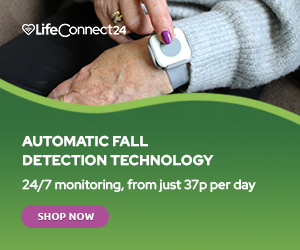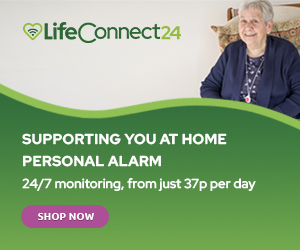Lots of people in the UK suffer with high blood pressure or hypertension. After a hypertension diagnosis, you will likely need to make some important lifestyle changes, including your diet. Diet can be a big factor in high blood pressure. Luckily, the DASH diet can help. For those who may be unaware, DASH stands for Dietary Approaches to stop Hypertension. This means that the diet can help lower blood pressure and cholesterol, as well as helping to prevent diabetes.
Of course, there are plenty of diets out there and we’re always hearing different things about each one. Not every option will be right for everybody. Today’s article takes a closer look at the DASH Diet to help you understand how it works and whether it’s right for you.
Our guide to healthy living contains other useful nutrition advice – click here to read it.
What is the DASH Diet?
As we’ve already mentioned, the DASH Diet aims to lower blood pressure and improve overall health. Lots of people who have followed the DASH Diet also report that it helped them lose excess weight. However, it is not designed primarily for weight loss.
With the DASH Diet, it is possible to reduce your blood pressure by a few points within just a few weeks. It significantly reduces your salt intake and emphasises vegetables and lean proteins. There are two distinct phases to the DASH Diet. Phase one sees you eating a very low-carb and high-protein diet for two weeks. Then in phase 2, you’ll reintroduce healthy carbohydrates and sweet treats like fresh fruit.
What is Hypertension?
The DASH Diet is designed to combat hypertension. Hypertension is another name for high blood pressure. This is a very common long-term medical condition, where the blood pressure in your arteries is higher than it should be. Unfortunately, it rarely presents any symptoms until your blood pressure reaches dangerously high levels. Over time, hypertension will put a huge amount of strain on your heart.
In most people, blood pressure should be between 90/60mmHg and 120/80mmHg. A blood pressure reading of 140/90mmHg or higher is considered high.
High blood pressure can be triggered by the following:
- Smoking.
- Being overweight.
- A lack of exercise.
- Drinking excessive amounts of alcohol.
- Eating too much salt.
- Not eating enough vegetables and fruit.
- A lack of sleep.
People who suffer from stress and conditions such as kidney disease and thyroid disorders are also more likely to have high blood pressure.
What do you eat on the DASH Diet?
The DASH Diet mainly consists of lean meats, fish, beans, lentils, wholegrains, and vegetables. It is low in salt, added sugars, fat and red meats.
The following is an example of the daily servings recommended by the official NHLBI website, for a 2000 calorie-a-day diet:
- Grains – 6-8 servings.
- Meats, poultry and fish – 6 or less.
- Vegetables – 4-5.
- Fruit – 4-5.
- Low fat or fat-free diary – 2-3
- Fats and oils – 2-3
- Sodium – 2300mg.
They also suggest that you have 4-5 weekly servings of nuts, seeds, dry beans and peas, with five or less servings of sweets. Those following the DASH Diet should choose foods which are low in saturated fats, rich in potassium, calcium, magnesium, fiber and protein, and lower in sodium.
Sample Meal Plans
Getting into a new diet can be tricky. Fortunately there are plenty of example meal plans available on the internet. The National Kidney Foundation website has a detailed plan, as does the Mayo Clinic website here.
The example below is from the American National Heart, Lung, and Blood Institute, which has conducted lots of research into the benefits of the DASH Diet.
Breakfast
A small bowl of bran flakes with skimmed milk and a medium banana.
One slice of whole wheat bread with spread.
Drink: a cup of orange juice.
Lunch
Chicken salad: chicken breast with cucumber, tomato, sunflower seeds, and low-calorie Italian dressing.
Two slices of whole wheat bread with Dijon mustard.
Drink: half a cup of fruit juice.
Dinner
A cod fillet, cooked with a teaspoon of lemon juice.
95g brown rice.
100g spinach, cooked with a small amount of oil and one tablespoon of chopped almonds.
Snacks
Sunflower seeds, unsalted (two tablespoons)
Fat-free yoghurt, no added sugar (one cup)
Personal Alarm Information
If you have hypertension, or you’re concerned about your health in general, it might be wise to consider a LifeConnect24 alarm. Even if you never need to use it, having a personal alarm can be very reassuring. A fall detector plan could offer additional peace of mind. For more information about our life-saving personal alarm service, please get in touch with our friendly team on 0800 999 0400. Alternatively, send us an email to info@lifeconnect24.co.uk or get in touch online.
VAT Exemption
Hypertension is a condition which qualifies you for VAT Exemption when you order a personal alarm system. This means that you will not have to pay any VAT whatsoever on your new Lifeline alarm. For a list of other qualifying conditions, click here.
Editor’s Note: This blog was updated on 26th October 2020 to reflect current information. Originally published January 2018.



Leave A Comment